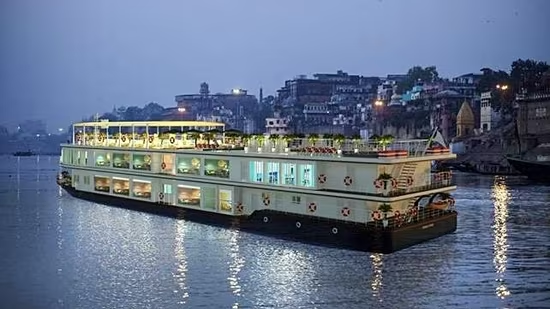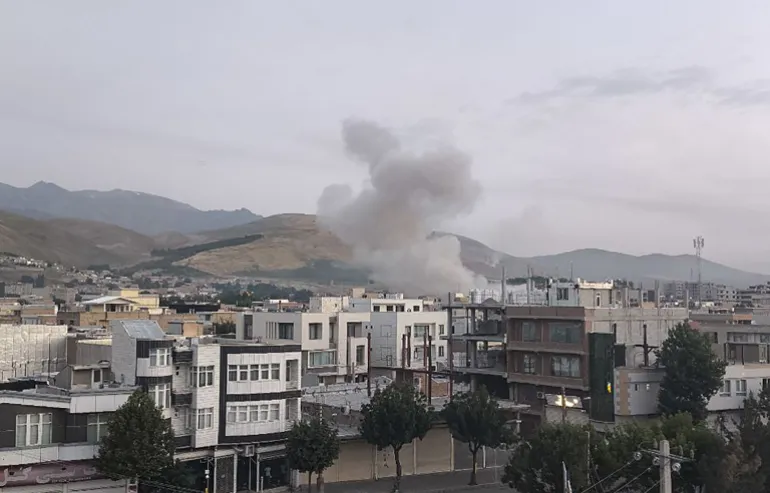- Courses
- GS Full Course 1 Year
- GS Full Course 2 Year
- GS Full Course 3 Year
- GS Full Course Till Selection
- Answer Alpha: Mains 2025 Mentorship
- MEP (Mains Enrichment Programme) Data, Facts
- Essay Target – 150+ Marks
- Online Program
- GS Recorded Course
- Polity
- Geography
- Economy
- Ancient, Medieval and Art & Culture AMAC
- Modern India, Post Independence & World History
- Environment
- Governance
- Science & Technology
- International Relations and Internal Security
- Disaster Management
- Ethics
- Current Affairs
- Indian Society and Social Issue
- NCERT- Science and Technology
- NCERT - Geography
- NCERT - Ancient History
- NCERT- World History
- CSAT
- 5 LAYERED ARJUNA Mentorship
- Public Administration Optional
- ABOUT US
- OUR TOPPERS
- TEST SERIES
- FREE STUDY MATERIAL
- VIDEOS
- CONTACT US
PM shows Green Flag to Ganga Vilas Cruise
PM shows Green Flag to Ganga Vilas Cruise

PM shows Green Flag to Ganga Vilas Cruise
Why in News?
Recently, the Prime Minister of India flagged off the world’s longest river cruise, ‘MV Ganga Vilas’ in Varanasi.
During the event, the Prime Minister also inaugurated the Tent City in Varanasi and laid the foundation stones for several other inland waterways projects.
About Ganga Vilas Cruise
1. The cruise is managed by private operators and the Inland Waterways Authority of India (IWAI), under the Ministry of Shipping, Ports and Waterways (MoPSW) has supported the project.
2. It will explore 40 historic sites on the banks of the river Ganga including, Mahabodhi temple, Hazarduari Palace, Katra Masjid, Bodh Gaya, Chandanagar church, Char Bangla Temple and more.
3. Besides connecting National Waterway 1 (NW-1) which includes Ganga and National Waterway 2 (NW-2) on Brahmaputra, the cruise will cross 27 river systems.
4. The Ganga - Bhagirathi-Hooghly River system between Haldia (Sagar) and Allahabad (1620 km) was declared as NW-1 in 1986.
5. The 51 days cruise is planned with visits to 50 tourist spots including World Heritage Sites, National Parks, River Ghats, and major cities like Patna in Bihar, Sahibganj in Jharkhand, Kolkata in West Bengal, Dhaka in Bangladesh and Guwahati in Assam.
Significance of the Project
1. The project will boost river cruise tourism and will bring a new age of tourism for India. The cruise has been planned to showcase the best of India to the world.
2. The journey will give foreign tourists an opportunity to indulge in the art, culture, history, and spirituality of India and Bangladesh.
About National Waterways of India
1. Transportation plays an important role in the development of any country and it is of great significance for a developing country like India.
2. India has about 14500 km of navigable waterways. This includes rivers, backwaters, canals, creeks, and so on.
3. National Waterways Act came into effect in 2016. It proposed 106 National Waterways and merges 5 existing Acts which declared the 5 National Waterways.
4. Out of the 111 National Waterways declared under the National Waterways Act, 2016, 13 are operational for shipping and navigation and cargo/passenger vessels are moving on them.
5. 13 Operational National Waterways in India are:
|
Sl. No. |
NW Number |
River System |
Route |
Length (in km) |
Locations |
Established |
|
1 |
NW – 1 |
Ganga-Bhagirathi-Hooghly |
Prayagraj – Haldia |
1620 |
Uttar Pradesh, Bihar, Jharkhand, West Bengal |
1986 |
|
2 |
NW – 2 |
Brahmaputra |
Sadiya-Dhubri |
891 |
Assam |
1988 |
|
3 |
NW – 3 |
West Coast Canal, Champakara Canal, and Udyogamandal Canal |
Kottapuram – Kollam |
205 |
Kerala |
1993 |
|
4 |
NW – 4 |
Krishna and Godavari |
Kakinada–Puducherry stretch of canals, Kaluvelly Tank, Bhadrachalam – Rajahmundry, Waziraba–Vijayawada |
1095 |
Andhra Pradesh, Tamil Nadu, and Puducherry |
2008 |
|
5 |
NW – 10 |
Amba River |
|
45 |
Maharashtra |
|
|
6 |
NW – 83 |
Rajpuri Creek |
|
31 |
Maharashtra |
|
|
7 |
NW – 85 |
Revadanda Creek – Kundalika River System |
|
31 |
Maharashtra |
|
|
8 |
NW – 91 |
Shastri river–Jaigad creek system |
|
52 |
Maharashtra |
|
|
9 |
NW – 68 |
Mandovi – Usgaon Bridge to the Arabian Sea |
|
41 |
Goa |
|
|
10 |
NW – 111 |
Zuari– Sanvordem Bridge to Marmugao Port |
|
50 |
Goa |
|
|
11 |
NW – 73 |
Narmada River |
|
226 |
Gujarat and Maharashtra |
|
|
12 |
NW – 100 |
Tapi River |
|
436 |
Gujarat and Maharashtra |
|
|
13 |
NW – 97 (Sundarbans Waterways) |
Namkhana to AtharaBankiKhal |
Indo-Bangladesh Protocol Route |
172 |
West Bengal |
|
About the Inland Waterways Authority of India (IWAI)
1. It came into existence in 1986 for the development and regulation of inland waterways for shipping and navigation.
2. It primarily undertake projects for the development and maintenance of IWT infrastructure on national waterways through grants received from the Ministry of Shipping.
3. It is headquartered in Noida (UP) with regional offices at Patna (Bihar), Kolkata (West Bengal), Guwahati (Assam) and Kochi (Kerala) and sub-offices at other places throughout India.
Must Check: Best IAS Coaching Institute In Delhi



